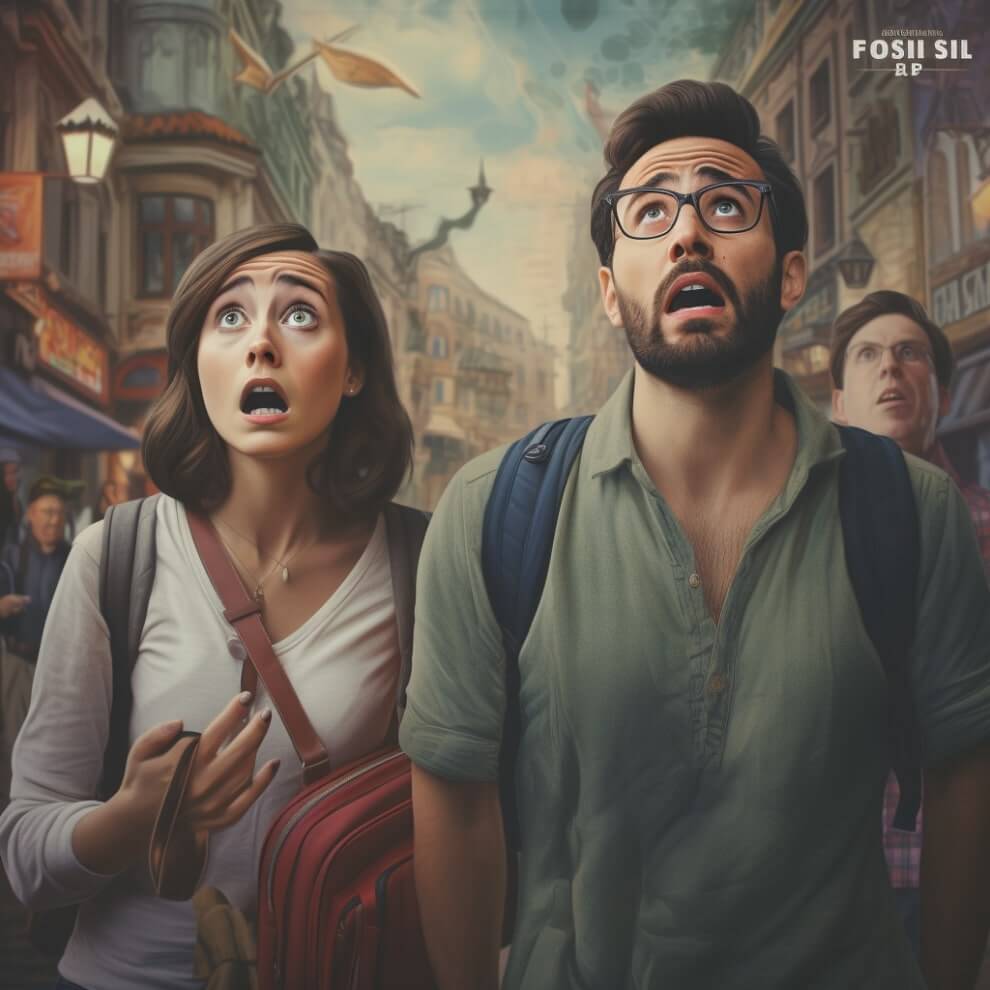
Picture this: Your customer is scrolling through their social media feed, mindlessly swiping through a sea of memes and mundane updates. Suddenly, they come across a great offer for what seems like a once-in-a-lifetime experience: A one-day scuba diving trip for beginners.
The customer feels an instant surge of excitement. “It’s a sign,” their inner voice tells them. Heart pounding, palms sweaty, they reach for their credit card, ready to embark on a spontaneous journey.
Welcome to the world of impulse marketing, where tour operators harness the power of spontaneity to lure customers into impulsive booking decisions.
Even if you don’t offer multi-day tours, the same practice can be applied to your experiences. When you present your target customer with an offer that feels irresistible and fleeting, rationality quickly takes a backseat. Once they become emotionally invested in the experience, the spontaneous bookings start rolling in.
In this post, we’ll explore impulse marketing — and how to psychologically influence your customers to make a booking.
What is impulse marketing?
Impulse marketing is a strategic approach that aims to prompt immediate and unplanned purchases from customers. It capitalizes on their impulsive tendencies by creating a sense of urgency, excitement, or desire for a new experience.
Unlike traditional marketing efforts — which focus on nurturing a relationship with customers until they feel confident enough to book — impulse marketing aims to influence customers in the here and now, encouraging them to make quick booking decisions.
6 psychological factors that trigger impulse buying
So, what makes someone book an experience without giving it a second thought?
- FOMO: FOMO — which is an acronym for “fear of missing out” — is a strategy that compels individuals to take action to avoid feeling left out. By creating a sense of exclusivity or limited availability, tour operators can tap into customers’ fear of missing out on unique experiences or special offers.
- Scarcity: The scarcity principle suggests that people place a higher value on products or experiences that are limited in quantity or availability. Operators can promote limited-time offers and limited-edition tours to create a sense of scarcity and urgency, triggering customers to book on the spot. Another tip is to showcase limited availability on your website. If customers are trying to sign up for an escape game and see that there are only a few spots left, they’ll feel the urge to book right away.
- Exclusivity: Everyone loves being a part of something exclusive. As a tour operator, you can leverage this by offering exclusive packages, VIP access, or behind-the-scenes experiences that appeal to customers’ desire for something special and unique.
- Validation from past customers: Before customers make their final booking decisions, they often look to others for guidance and validation. They’re looking for positive reviews, testimonials, or social media endorsements from past customers. By displaying reviews and testimonials on your website and social media pages, you’ start to build trust with new customers who may not have heard of your company before. A single glowing review can have a strong impact on customers — it may just inspire them to book right away.
- Fear of regret: Emphasizing the potential loss or missed opportunities associated with not making a booking can tap into customers’ fear of regret. For example, a hiking trip operator might use language like, “Don’t miss out on the trip of a lifetime!” to encourage impulsive booking decisions.
- Anchoring and comparative pricing: Anchoring refers to the tendency of shoppers to rely heavily on the first piece of information they receive. If you present higher-priced tours first and then offer a discounted price, you create a perception of value. The customer will feel like they’re getting a higher-priced tour for less, which may push them to book on the spot.
7 impulse marketing strategies that tours and attractions can use
Now, we’ll look at a few tangible strategies to put these psychological triggers to work.
1. Limited-time offers
Limited-time offers are a powerful way to create a sense of urgency. The key is to offer a discounted tour or experience for a short period of time. When you promote it, make sure to use language that encourages customers to book before the offer is over.
Here’s an example: “Book within the next 24 hours and get 20% off your adventure tour package.”
This strategy also taps into FOMO and further encourages potential customers to make spontaneous decisions.
2. Bundling
Bundling is the process of combining one or more tours or services to create an attractive package deal. Combining multiple experiences or services at a discounted price can bring more value to your customers than a standalone tour.
The keyword here is “value.” The bundle needs to appeal to your customers’ desire for value and convenience. In other words, how can you make this experience more memorable — while saving your customers money?
Imagine you’re a tour operator that specializes in sightseeing tours in Chicago. You might offer a “City Explorer Package” that includes guided tours, transportation, and access to popular attractions, all at a bundled price.
Now, you’ve simplified the decision-making process for your customers. They don’t need to choose between the restaurant tour or the boat tour because you’ve offered both in a bundle. Ease and convenience are great motivators for spontaneous booking decisions.
3. Display limited availability on your website
We already discussed the concept of scarcity and how it can be a strong impulse-buying trigger.
Let’s say someone is visiting your city for the first time, and your tour is at the top of their list of things to do. If they see that there is limited availability, they’ll prioritize your experience over others. They may act quickly to snag a spot before the opportunity disappears.
By highlighting limited availability or limited spots on your tours, you’ll create a sense of exclusivity and urgency. Your tour page, for instance, can display messages like “Only 5 spots left!” or “Exclusive VIP experience limited to 8 guests.”
4. Social proof
We know that customers rely on reviews and feedback from others to make their booking decisions.
That’s where social proof comes in. Social proof is the process of highlighting positive reviews, testimonials, or endorsements from satisfied customers. You can feature testimonials on your website, share customer stories on social media, or even partner with influencers who can endorse your tours or attractions.
Social proof helps build trust and credibility with new customers, especially those who are on the fence about booking with a company they haven’t heard of before.
5. Interactive and engaging content
Engaging content plays a crucial role in driving impulse purchases. Tour operators that create interactive and visually appealing content — think high-quality photos on your homepage, videos on Instagram, and virtual tours — will set themselves apart from the competition.
Think of ways you can showcase the unique features of your tours or attractions. This could be an Instagram Reel showing the behind-the-scenes of a normal day on the job, or a photo gallery highlighting the top sights of your tour.
If your content can evoke a sense of excitement and curiosity, your customers will feel the desire to experience it firsthand.
6. Personalize your offers
Personalization is a key factor in influencing all buying decisions — but especially impulsive ones. Customers are much more likely to book an experience that caters to their specific interests than one they found in a random travel guide.
But to do this, tour operators need to put in the work. You need to dig into your customer data and look at individual preferences and interests. Analyze customers’ past bookings, demographics, and browsing behavior. From there, you can suggest tailored tour packages or attractions that align with a particular customer.
7. Strategic partnerships and collaborations
Consider what businesses or attractions you can partner with to offer combined experiences or package deals, including local hotels or restaurants.
For example, a tour operator specializing in wildlife safaris can partner with a luxury lodge to offer an all-inclusive package that includes accommodation, meals, and safari tours.
This strategy not only enhances the perceived value of the experience but also broadens your reach through cross-promotion. Your brand will be presented to an audience you weren’t reaching on your own. It can also help boost your reputation among new customers. If a reputable hotel or restaurant is recommending your tour or attraction, customers will feel more inclined to book with you.
7 ideas that tours and attractions can leverage for more impulse purchases
Let’s look at how you can apply these tactics to your tour or attraction to encourage more impulse bookings.
1. Limited-Time Flash Sales
Limited time flash sales are a great way to encourage impulse purchases. Let’s say a haunted tour company in a popular city wants to run a 50% off sale for their evening ghost tours. The ad may say something like this: “Save 50% on Evening Ghost Tours Over the Next 24 Hours!”
- You would promote the sale on your website and social media pages, highlighting the discounted price and the thrill of experiencing ghost stories around the town’s haunted locations.
- Specifically mention timing in your offer. Note that the phrase “Over the next 24 hours” creates a sense of urgency.
- Offering a significant discount also taps into the impulse buying factor, encouraging potential customers to make a spontaneous decision to join the tour that very night.
2. Last-Minute Deals
Many travel companies offer a big discount on quick, last-minute bookings. Let’s say you have a couple of spots open on an afternoon tour. You can run a last-minute offer, selling those spots at a discount — “Three spots available! Book now and get 15% off.”
- Emphasize the limited availability and time-sensitive nature of the deals to encourage customers to book their travel plans spontaneously.
3. Unique Offers
Capitalize on what sets your brand apart from others. You can find a great example in many of Airbnb’s ads. The brand knows that its audience is looking for something a bit more unconventional than your typical hotel stay, so it promotes accommodations like treehouses, yurts, and castles to catch their customers’ attention.
Similarly, a tour operator or attraction highlights the exclusivity and limited availability of its most unique experiences. An escape game, for instance, might run an ad that says, “Can you crack the code? Don’t miss out on the toughest escape game in the city!”
- Present your experience as a unique, once-in-a-lifetime opportunity.
- Make sure to highlight the factors that set you apart from your competitors.
4. VIP Access
Popular tours or attractions can entice more bookings with an exclusive VIP offer. A theme park, for instance, could upsell a regular ticket by offering a skip-the-line pass at checkout. Before hitting the book now button, customers will receive an offer that says, “VIP access passes available: Skip the lines and maximize your fun!”
- Promote the VIP offer at checkout to encourage upsells.
- Allow customers to purchase the VIP experience after they book, too. Promote it through social media and on-site advertisements, with a big emphasis on how much better the VIP experience will be compared to a regular ticket.
- Target the right customers, such as families or couples seeking a hassle-free experience, encouraging them to upgrade their visit and indulge in a memorable day of fun.
5. Highlight the Exclusivity
Every time an operator emphasizes that there is “limited space” available for an experience, it makes it feel more exclusive. For example, a wine tour might run an ad that says, “Limited-Space Wine Tasting Tour: Reserve Your Spot Today!”
- The key here is to highlight that the tours will give guests insider access to an experience. In the wine tour case, the operator might use language like “prestigious wineries” and “the opportunity to sample rare wines.”
- Tailor your campaigns to appeal to the curiosity of your biggest fans. Insider access makes them feel like they’re experiencing something that very few people do.
6. Limited-Edition Special Events
Limited-edition or special events can also create a sense of esxlcusivity, which helps increase the urge of an impulse purchase. Let’s say a cruise company that operates scenic tours introduces a limited-edition sunset wine-tasting cruise. The company starts promoting it a month before Valentine’s Day, with the following ad: “Looking for a Valentine’s Day plan? Join our limited-edition wine tastingcruise for two.”
- Align the campaign with relevant events or holidays.
- Push out the campaign via email and targeted social media ads, highlighting it as a one-time opportunity for your target audience.
- Leverage the FOMO strategy to motivate your customers to book by emphasizing that the experience is only happening for a limited amount of time.
7. Surprise Upgrade
Let’s say a guest is browsing your website, and they receive the following offer: “Book a standard ticket, and get a complimentary VIP experience!” If they were already considering booking with you, that’s a pretty tough offer to ignore.
- If you offer different ticket tiers, surprise customers by offering a complimentary upgrade from a standard ticket to a VIP experience.
- Emphasize the added perks that will enhance the experience, compelling visitors to take advantage of an unexpected upgrade opportunity.
***
Your customers are often overwhelmed with endless tour and attraction options. They’re more likely to compare offers rather than make a spontaneous booking.
Yet through carefully crafted campaigns that trigger that impulsive spark, tour operators can ignite a desire to book here and now. The key lies in understanding the psychology behind impulse buying, the art of creating urgency, and the implementation of these techniques in your marketing campaigns.
For your next campaign, consider adding an element of FOMO or exclusivity to see how your customers respond.




